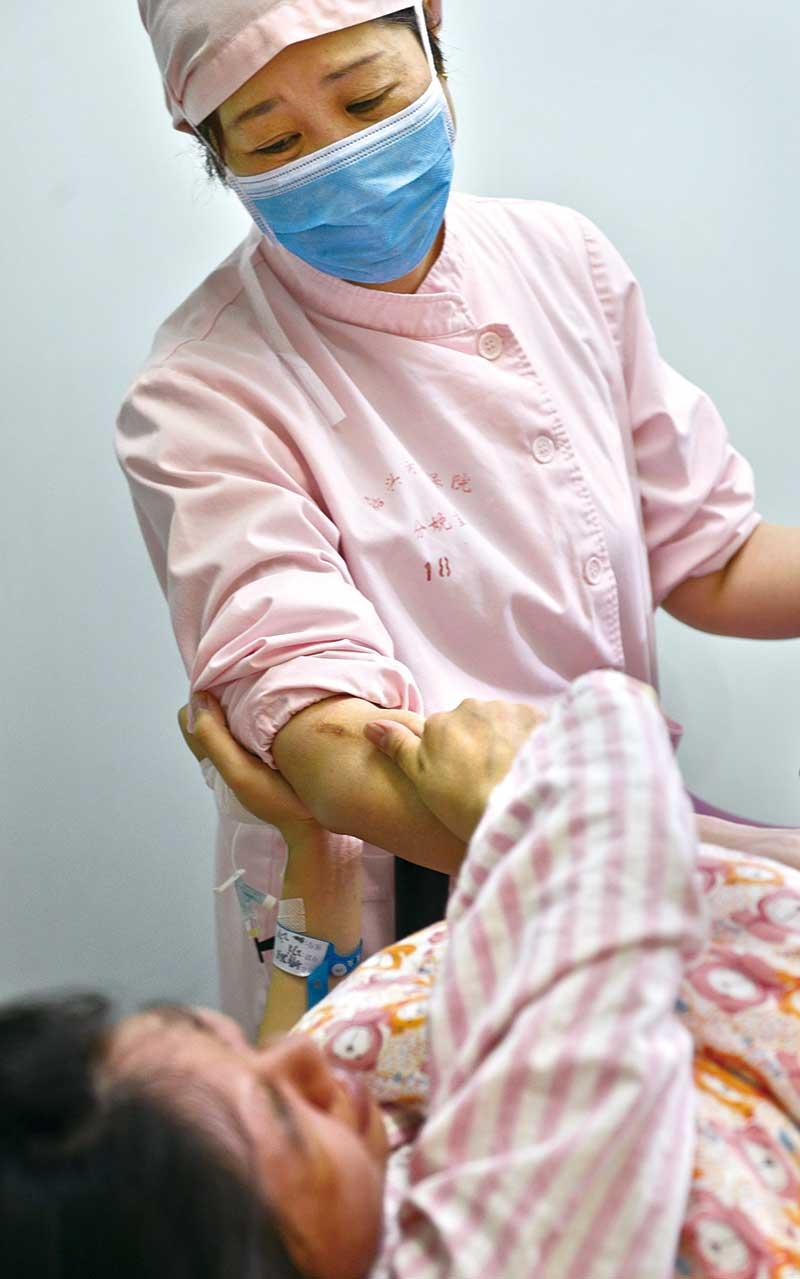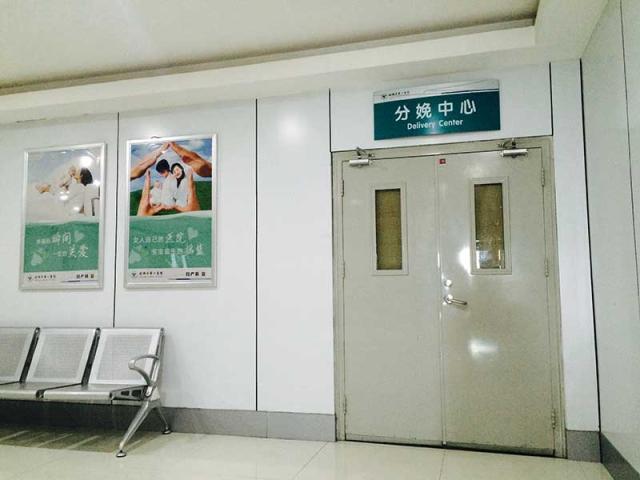Over the years, the NPLD has emphasized the significance of establishing the “modern labor and delivery room.” From Professor Hu’s perspective, a modern labor and delivery room is supposed to be a combination of operating room, delivery room and ICU.
“The core idea is to have 24-hour availability of anesthesia doctors in labor and delivery rooms and to proceed with team-based medical practice in perinatology,” Hu told NewsChina. He emphasized that the management of modern labor and delivery rooms not only depends on skills and techniques, but also on the system of support.
Nevertheless, to put such a design into practise is far from easy considering the current Chinese medical care situation.
One reason could be that there are not enough trained anesthesia doctors in the public medical system. There were only about 85,000 registered anesthesiologists in China in 2017 and at least 300,000 anesthesia doctors are needed to meet the demand, the deputy president of the Chinese Society of Anesthesiologists, Huang Wenqi, told Yangcheng Evening News.
In China, there are only 0.5 anesthesia doctors for every 10,000 people, compared with 2.5 in the US and 2.8 in the UK.
Another factor that holds back the pace of pushing the wider use of labor analgesia is that hospitals usually cannot make enough profit by providing the service.
Duan Tao told NewsChina that obstetrics is a department that is not profitable yet it is highly risky. “Hospitals make little profit from obstetrics since most normal delivery costs are covered by social medical insurance. Obstetrics, anesthesiology and neonatology are all ‘cheap and less important’ in the eyes of many hospital executives. Establishing a modern delivery room requires enough numbers of obstetricians, anesthesiologists and neonatal doctors: what hospital executive is going to be willing to commit to something with huge inputs but little gains?” Duan said.
A director of a maternal and childcare service hospital in Beijing, who insisted on anonymity, told NewsChina that in Beijing, childbirth pain reduction usually costs about 2,000 yuan ($300), much lower than the price of a C-section. Obstetricians and anesthetists barely earn any money from the procedure, but they have to be highly attentive during the entire process, which takes over 10 hours most of the time.
“After China revised the One Child policy, many families are planning to have two children, which exacerbates the problem further and also puts more pressure on doctors and nurses,” the director said. He also suggested that the government could increase the [payout] limit of social medical insurance, or cover the salaries of hospital staff, to guarantee a modern obstetrics service.
Another hindrance comes from the current management system of most hospitals in China. Modern labor and delivery rooms call for multi-divisional collaboration, and, ideally, an individual operating room should be available in the delivery room. But this is hard to fulfill under the current department-based management system that most hospitals in China adopt.
Obstetrics departments in China are usually separate from others. Thus, delivery rooms and operating rooms, which belong to different departments, can’t be arranged close to each other.
Worse still, in many general hospitals, obstetrics departments and delivery rooms are in different buildings due to the large number of patients. Therefore, it’s hard to establish a modern delivery system with cross-functional support.
“Hospital managers are usually very conservative in their approach to management system reconstruction. China has run delivery departments separately for several decades, and, for many hospital executives, there’s no need to make a change,” Lian told NewsChina.
The misguided conventional values, the serious shortage of anesthesia doctors, unaffordable costs and the rigid management system of hospitals – all these factors, from the perspective of Hu, impede the establishment of modern labor and delivery rooms.
“It’s not a simple problem of importing techniques. The dilemma that China is facing in this field is a very complicated one resulting from historical, social, economic and cultural elements,” Hu said.
Many experts hope that the Chinese government can step in to give the country’s modernization of obstetrics a decisive boost. In an interview with Cover.cn, Zhang Deming, deputy to the National People’s Congress and deputy president of the People’s Hospital of Ya’an, in Sichuan Province, stressed that safe labor analgesia should be included in public medical insurance and the government needs to give more financial support to encourage hospitals to develop this service.
For the future development of obstetrics in China, Duan argues that the country should learn from the best practices from abroad and formulate a strategy for developing obstetrics.
“It is urgent for Chinese hospitals to establish a scientific, regulated, refined procedure and management practices. Seldom does a hospital think of its own long-term strategy. What’s the best experience from around the world we can learn from? How can we draw up our own strategies and policies that suit our own conditions? We need to frequently challenge ourselves with such questions,” Duan told NewsChina.
“Since my visits to China in 2006 to now, this country has made remarkable progress in the establishment of modern labor and delivery rooms,” Dr Philip Hess, the well-known obstetrical anesthesiologist from Beth Israel Deaconess Medical Center of Harvard Medical School, told NewsChina.
Hess has been to China six times to visit hospitals in multiple cities, and has also given training courses for anesthesiologists at Shijiazhuang Maternity Hospital.
“Many hospitals in China are already equipped with advanced facilities, and what they need now is to establish a normalized and efficient functioning system to guarantee refined management and provide better services to patients. System is the core to everything,” Hess said.

 Old Version
Old Version


